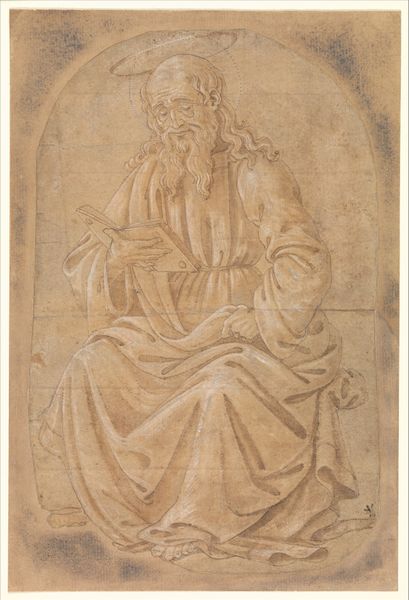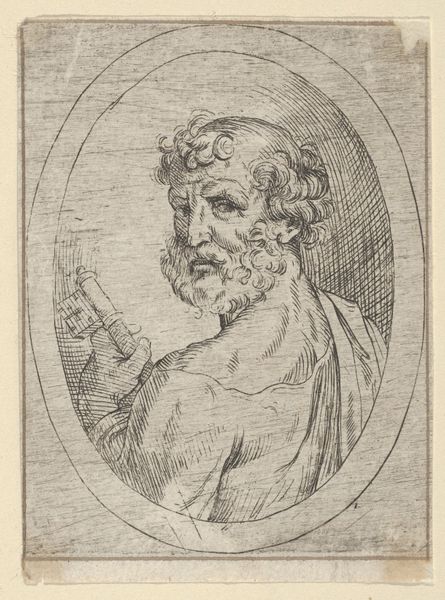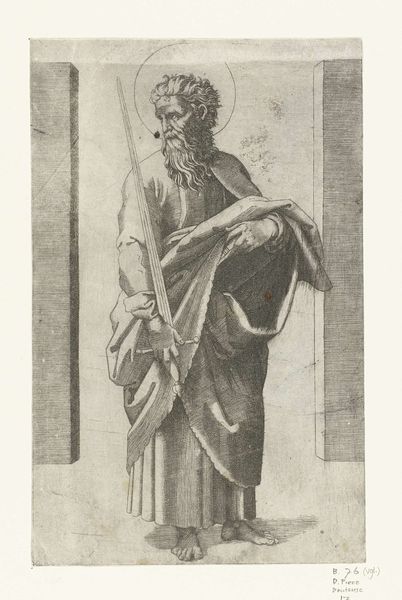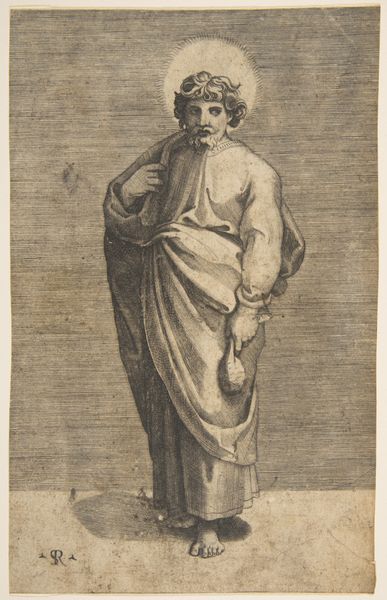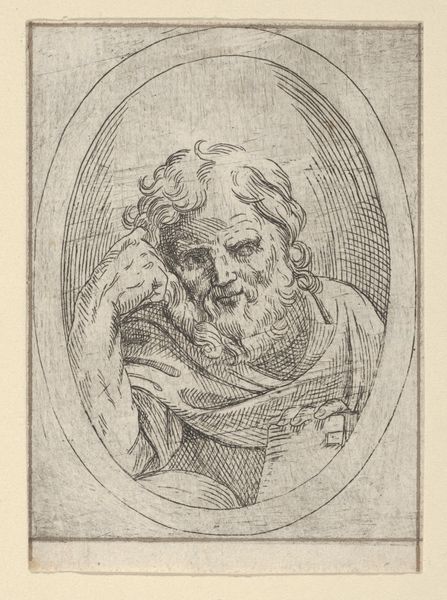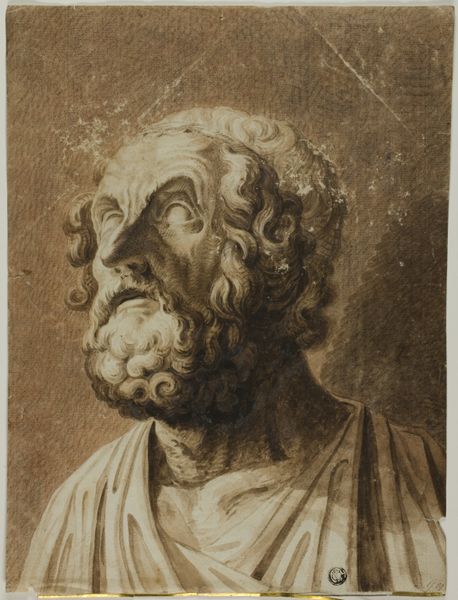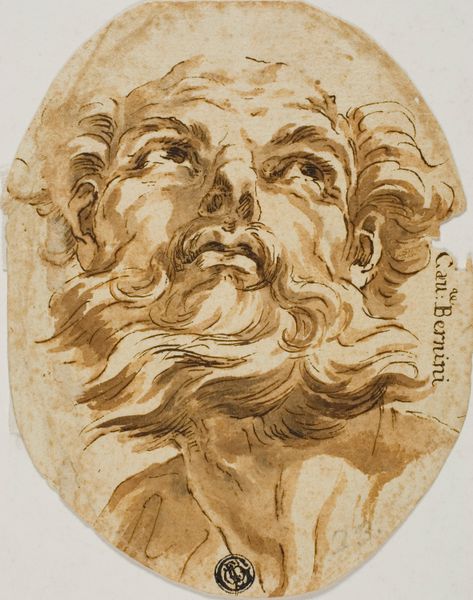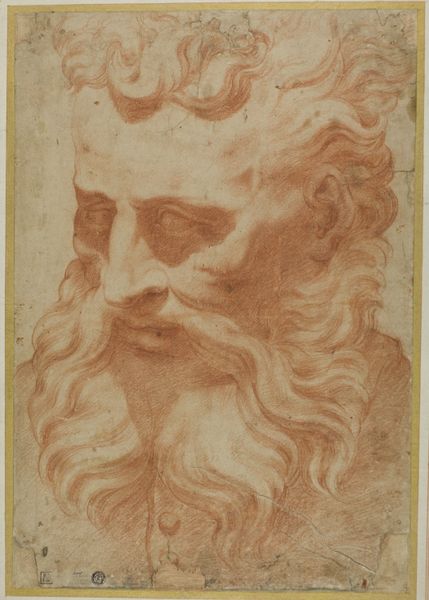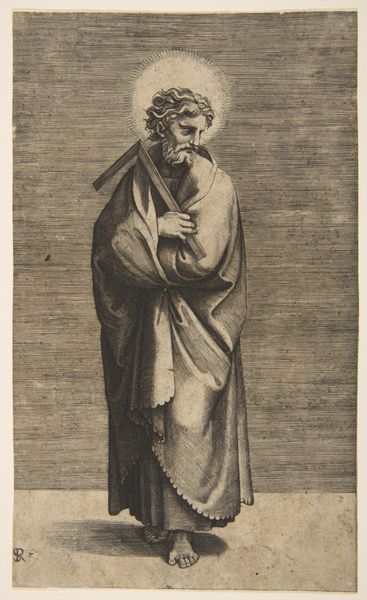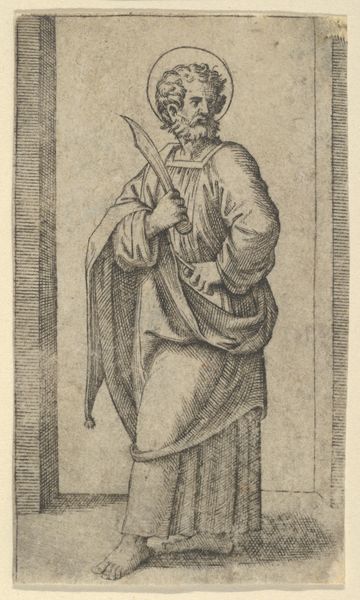
drawing, paper, ink
#
portrait
#
drawing
#
baroque
#
charcoal drawing
#
figuration
#
paper
#
ink
#
pencil drawing
#
portrait drawing
#
history-painting
Copyright: Public Domain: Artvee
Editor: This drawing, "Christ with the Cross" by Joachim Wtewael, was made sometime between 1605 and 1615 using ink on paper. The lines are quite expressive. How should we interpret it? Curator: Looking at this piece, I see the real story in the materials themselves and the artist’s process. The paper, the ink – where did they come from? What was the labor involved in creating them? We can consider the materiality of ink and the social implications behind it. The widespread availability of ink at this time due to the expansion of trade and book production played a crucial role in facilitating this image. What impact do you think this mass production of paper had? Editor: It must have given artists more ways to explore themes in drawings and make them more accessible. But did using cheaper materials lower the status of drawings, maybe? Curator: Exactly! The democratization of art materials could challenge traditional hierarchies between, say, painting and drawing. Was Wtewael deliberately choosing a "lesser" medium to make a statement, perhaps about the humility of Christ or to target a different audience? Consider, too, the social status of drawing within Wtewael's practice. Was it a preparatory study for a larger work, or a final work intended for circulation among a specific group? These details alter how we value both the work and its commentary on faith and production. Editor: That’s a helpful way to understand art; it's about both the subject and how the artwork came into existence, including all of its materials. Curator: Precisely! By investigating the production, distribution, and reception of this seemingly simple drawing, we can better grasp the complexities of Wtewael’s world and his commentary on faith and artistic practice.
Comments
No comments
Be the first to comment and join the conversation on the ultimate creative platform.
